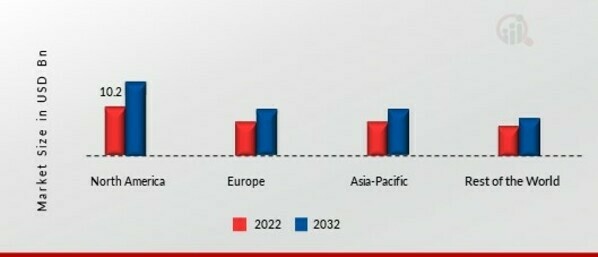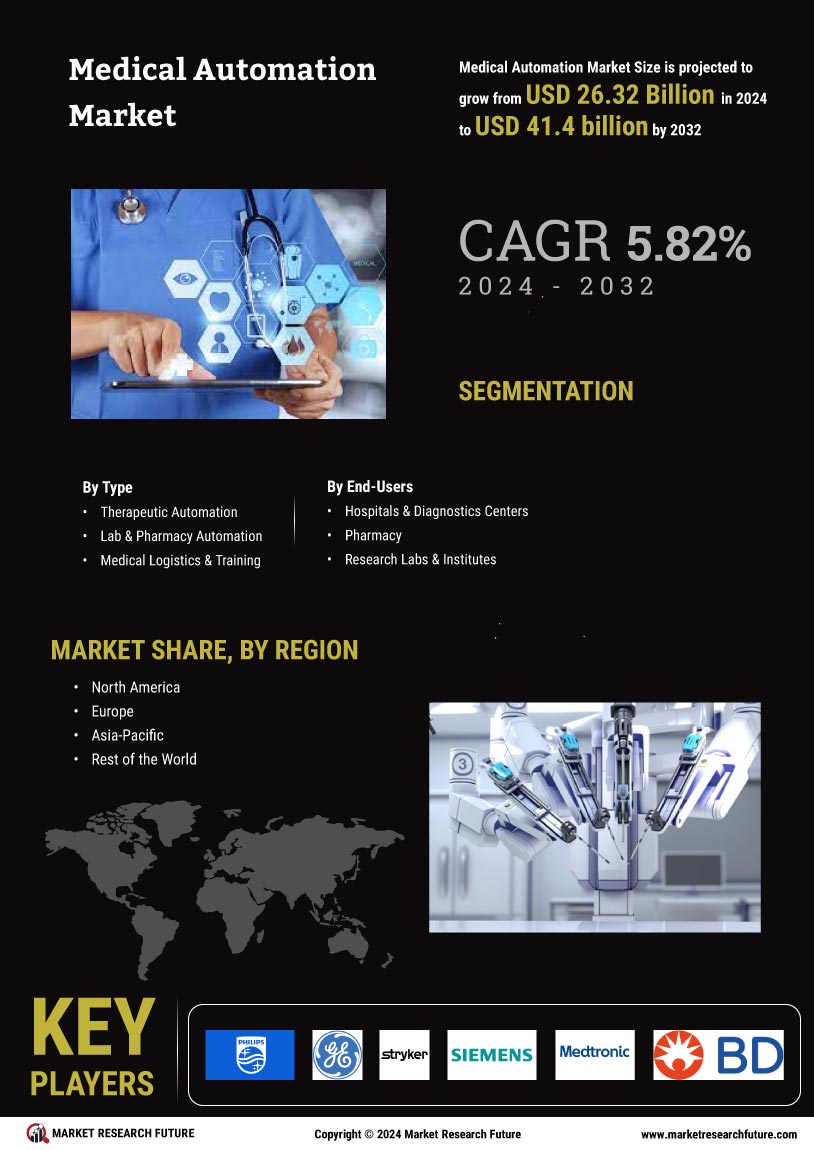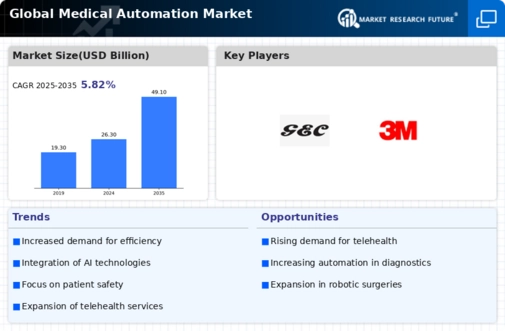By Region, the study provides market insights into North America, Europe, Asia-Pacific, and the Rest of the World. Because of significant R&D spending, new launches, and government initiatives, North America will dominate the sector in 2022. Furthermore, a well-established healthcare infrastructure has contributed to the region's greater use of laboratory automation. Furthermore, the supporting reimbursement system and the local presence of significant firms in this region are driving market penetration of revolutionary solutions.
Further, the major countries studied in the market report are: The U.S, Canada, Germany, France, UK, Italy, Spain, China, Japan, India, Australia, South Korea, and Brazil.
Figure 2: MEDICAL AUTOMATION MARKET SHARE BY REGION 2023 (%)

Source: Secondary Research, Primary Research, Market Research Future Database and Analyst Review
The European medical automation market is predicted to grow at a CAGR of 9.30% from 2023 to 2030. The region's market expansion is likely to be aided by increased demand for technology-driven systems, the presence of key players, and the presence of well-established and developed healthcare infrastructure. Furthermore, the presence of government agencies, such as the Medicines and Healthcare Products Regulatory Agency, is critical in certifying pharmacy automation systems and other devices with European standards, which is expected to provide growth opportunities for this regional market in the coming years.
Further, the Germany Medical Automation market held the largest market share, and the UK Medical Automation market was the fastest growing market in the European region
Furthermore, the markets in Asia Pacific Medical Automation market are expected to grow at the fastest compound annual growth rate (CAGR) over the forecast period, owing to the region's developing healthcare sector, increasing cases of chronic diseases, and growing government and corporate investment in the healthcare sector, which are the region's major growth factors. Moreover, China Medical Automation market held the largest market share, and the India Medical Automation market was the fastest growing market in the Asia-Pacific region
The increased interest in digital health and healthcare innovation in the Asia-Pacific area is a new phenomenon. Many governments in the region are investing in digital health projects and encouraging the growth of healthcare companies and innovation hubs. For example, the Indian government started the Digital India programme in 2015 with the goal of improving access to healthcare and other public services through the use of technology. Singapore's government has established a number of initiatives to stimulate healthcare innovation and is investing in the development of new technologies such as artificial intelligence (AI) and robotics for healthcare.




